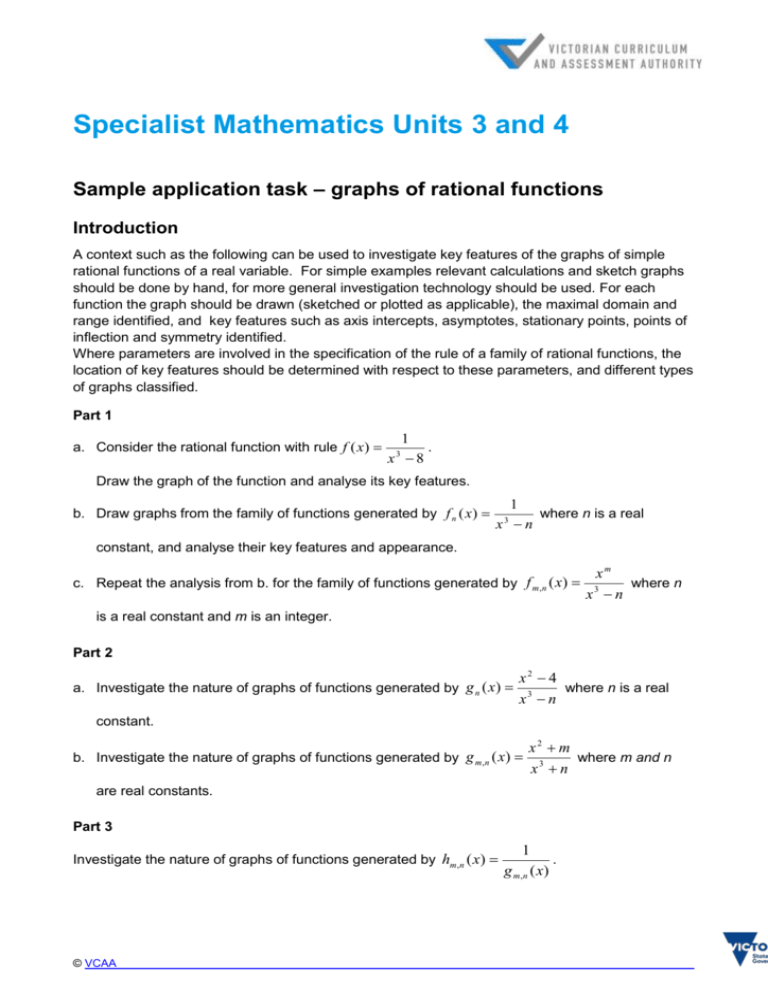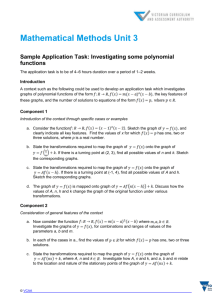Sample application task – graphs of rational functions
advertisement

Specialist Mathematics Units 3 and 4 Sample application task – graphs of rational functions Introduction A context such as the following can be used to investigate key features of the graphs of simple rational functions of a real variable. For simple examples relevant calculations and sketch graphs should be done by hand, for more general investigation technology should be used. For each function the graph should be drawn (sketched or plotted as applicable), the maximal domain and range identified, and key features such as axis intercepts, asymptotes, stationary points, points of inflection and symmetry identified. Where parameters are involved in the specification of the rule of a family of rational functions, the location of key features should be determined with respect to these parameters, and different types of graphs classified. Part 1 a. Consider the rational function with rule f ( x) 1 . x 8 3 Draw the graph of the function and analyse its key features. b. Draw graphs from the family of functions generated by f n ( x ) 1 where n is a real x n 3 constant, and analyse their key features and appearance. c. Repeat the analysis from b. for the family of functions generated by f m,n ( x) xm where n x3 n is a real constant and m is an integer. Part 2 a. Investigate the nature of graphs of functions generated by g n ( x) x2 4 where n is a real x3 n constant. b. Investigate the nature of graphs of functions generated by g m ,n ( x) x2 m where m and n x3 n are real constants. Part 3 Investigate the nature of graphs of functions generated by hm,n ( x) © VCAA 1 . g m , n ( x) Sample application task – graphs of rational functions Areas of study The following content from the areas of study is addressed through this task. Area of study Content dot point Functions and graphs 1 Algebra - Calculus 2 Vectors - Mechanics - Probability and statistics - Outcomes The following outcomes, key knowledge and key skills are addressed through this task. Outcome Key knowledge dot point Key skill dot point 1 1, 5, 7 1, 13 2 1, 2, 3, 4 1, 2, 4, 5, 7 3 1, 2, 3, 4, 6 1, 2, 4, 5, 6, 8, 9, 10, 11 © VCAA Page 2








